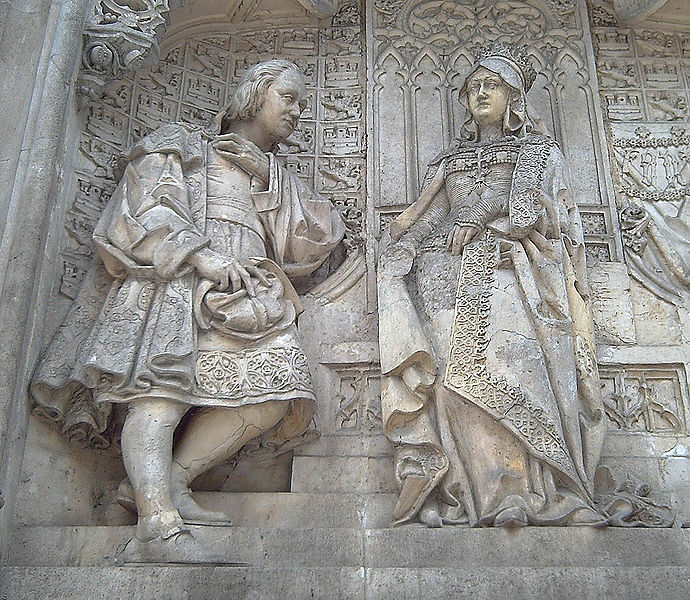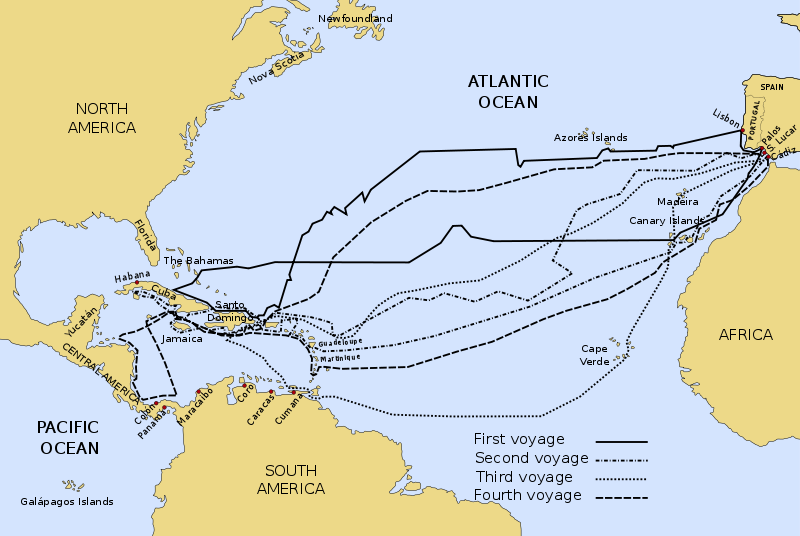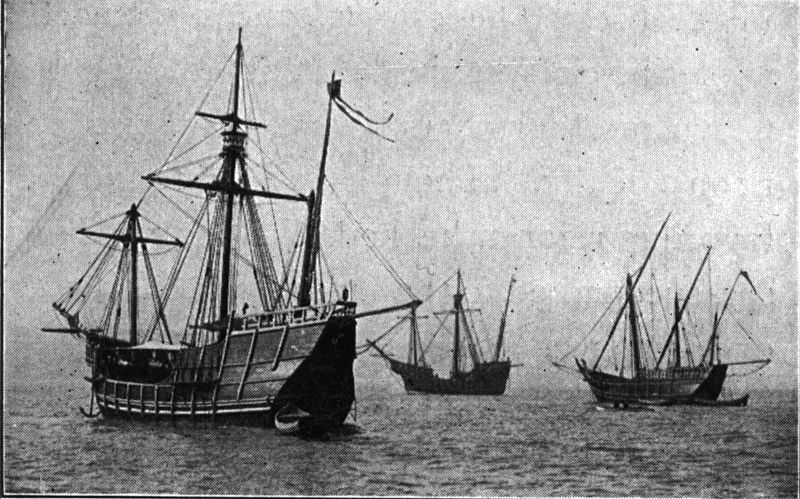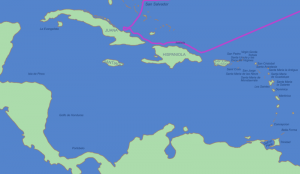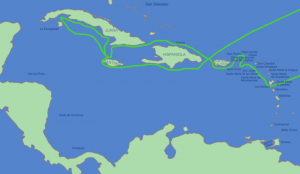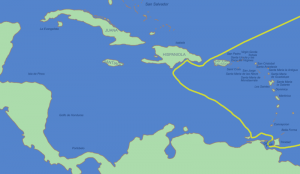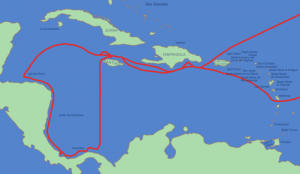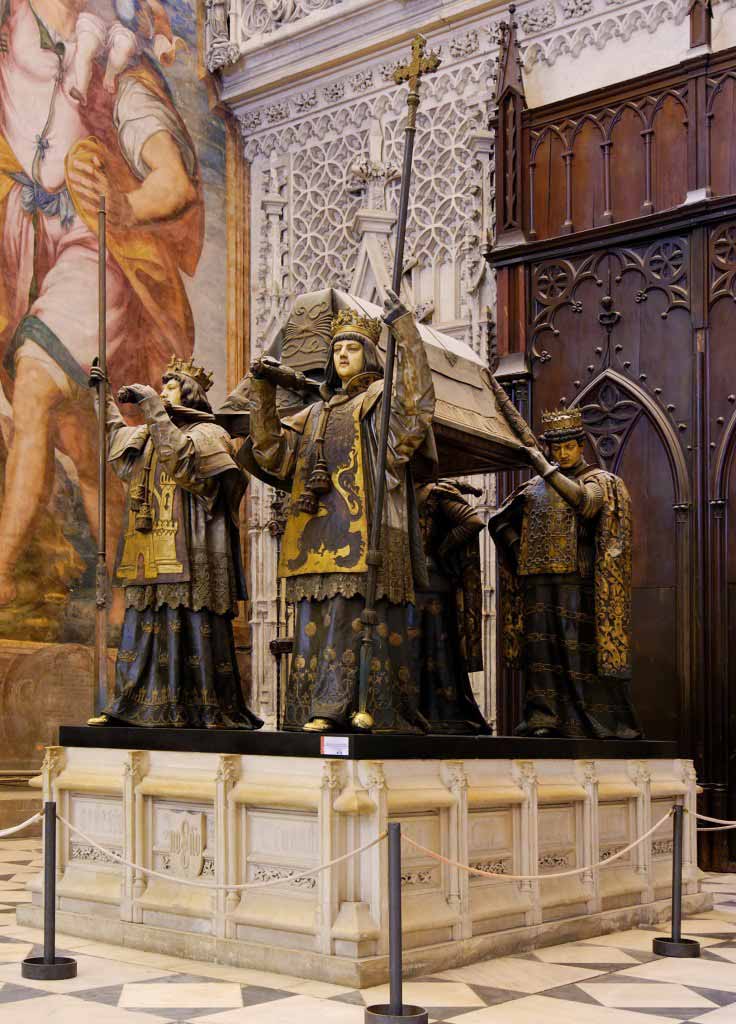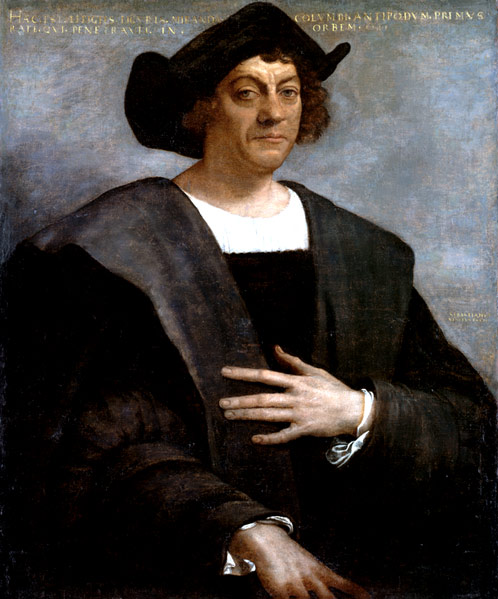 The name “Christopher Columbus” is a household name, especially among people who are familiar with the history of the Americas. He is popular because he was the explorer who tried to prove that the world was round by sailing across the seas and trying to reach other, unexplored regions on the globe, eventually making a mistake that would mark the beginning of a civilization and soon after, a new country.
The name “Christopher Columbus” is a household name, especially among people who are familiar with the history of the Americas. He is popular because he was the explorer who tried to prove that the world was round by sailing across the seas and trying to reach other, unexplored regions on the globe, eventually making a mistake that would mark the beginning of a civilization and soon after, a new country.
But does everyone actually know Christopher Columbus’ actual life and struggles? Here is a brief look at some of the important highlights of his life, making him one of the greatest navigators and explorers of all time.
The Migrant Italian
Nobody would have thought that the son of a cheese maker and wool weaver would literally discover a lot of new places about the world. Cristoforo Colombo (Latinized as Christopher Columbus) regularly assisted his father Domenico in running the trade they had in their hometown of Genoa (despite coming from the beaches of Liguria) in Italy, along with his brothers Giacomo and Giovani Pellegrino. Their life could have been normal all throughout, until Domenico decided to migrate to Savona. He owned a tavern and called the new place their home in 1470.
The trade-oriented Christopher, however, went back to Genoa three years later to serve as an apprentice to three famous Italian families, namely the Centurione, the Spinola, and the Di Negro. And because of their trade activities, he was sent to many places around Europe, like Bristol, England, Ireland, and Lisbon in Portugal.
In the course of these travels, he fell in love with and married Filipa Moniz Perestrelo, the daughter of the famous Bartolomeo Perestrelo of Portugal. In 1479, they had their first and only son Diego, and after spending some time with his infant, Christopher Columbus set sail again to the Portuguese trading posts along Guinea as well as the surrounding islands.
However, in 1485, the path of love took a different course, as it was said that Christopher either left his wife or heard about the death of Filipa. Either way, he found a new lover in Beatriz de Arana, a 20-year old orphan who became his mistress two years later.
Knowledge is the Key
During his work as an apprentice, he was able to extensively read various languages, including Latin, and read books discussing subject matters like astronomy, geometry, history, and trading.
One important thing that he came across in the course of all these is his readings on Greek and Roman geometry which played with the possibility of the roundness of the earth, instead of the widely accepted flatness of it. This has been backed up by his own experience as a trade apprentice, who observed the directions of the winds along the sea, as well as his skill in cartography. He found the theory to be plausible, as he pondered on his experiences and the possible explanation offered for it using Ptolemy’s geometrics.
Eventually, his curiosity and drive for knowledge was fueled, and this pushed him to do that which would surprise the rulers of Europe at that time.
The Four Voyages
Grounded in his belief of this possibility, he went on to propose his ideas to John II of Portugal by finding the Western route to the orient. Unfortunately, he was denied by John, on the grounds that his estimated distance was way shorter than what was usual.
Being rejected by Portugal, he took his research and findings at Genoa and England to prove them, but was rejected again. He then went straight to Spain to ask for an audience with Ferdinand and Isabella, the King and Queen of Spain. After his conversation with them, the Spanish Crown granted him funds for the sake of occupying lands in the Orient as part of the Spanish colonies.
First Voyage
Finally, it was only in 1492 that Columbus was able to leave Cadiz, Spain with three ships, the Gallega, Pinta and Santa Clara. His mission now was to occupy land, and as a reward, he will stand as the governor of those territories.
On October 12, his ships spotted land and he decided to temporarily land on what is called the Bahamas at the present time, which then was called by the locals as Guanahani. Columbus renamed it as San Salvador, as property of Spain. The most significant thing about this event is that he thought that he was in Asia, in India specifically, and started calling the natives as “Indians.” This mistake eventually became the most important event in the history of geography, for this is when Columbus officially “discovered” the New World. 
After staying for a few days, Columbus eventually moved towards Cuba and Hispaniola, reaching the La Navidad as shelter. In there, he was able to come across the Samana Peninsula, which he named as the “Bay of Arrows,” because the hostile Ciguayo tribesmen used their arrows to resist Columbus’ fleet.
Fortunately, Christopher Columbus’ men were able to resist them, and taking about 20 tribesmen as proof to the Spanish Crown, they took off and returned to Palos, Spain on March 15, 1943.
Second Voyage
His report on the voyage alongside his proofs impressed Ferdinand and Isabella, granting him another chance to expand the Spanish colonies in a second voyage. This one left Cadiz in September 1493, and he now had 17 ships with about 1,000 men for purposes of colonization and conversion into Christianity. The men were promised riches and abundance once they transferred these lands to the Spanish government.
A month later, after a stopover at the Canary Islands for replenishment of supplies and ship repairs (which he had also done in the first voyage), he set off again, but this time, he took a more southwestern route.
For this voyage, Columbus’ objective was to discover and claim the islands near Cuba. Influenced by his religiosity and his desire to convert natives into the Christian religion, he named these islands after various Christian saints and patrons. Some of these included the Santa Maria de Guadalupe, and further north, there were Montserrat, St. Kitts, Nevis, and Saint Croix, after the Holy Cross where Christ was crucified.
After these islands, he landed at Puerto Rico, rescuing two Spanish men found to be castrated by the natives. He also headed back and looked at how Cuba and Jamaica were doing, before retracing his path in Hispaniola back to Spain.
Third Voyage
His success in discovering new lands and claiming them for the Spanish Crown made him more well-known everywhere, and more than that, as part of the agreement he had with Spain, he was named the governor of Hispaniola. Later on, he was given an opportunity for a third voyage. For this, he left Sanlucar, Spain on May 30, 1498.
This time, he dared to go on a more southern route, heading towards Cape Verde and eventually reaching the river of Orinoco, as well as two places in the present South American mainland which he later named Tobago and Grenada. His arrival along the Orinoco River marked the second time that an explorer reached and stepped on the mainland; the first instance was done by the famous Viking Leif Ericson.
Christopher Columbus encountered a huge conflict in his life as an explorer when he passed by Hispaniola and heard about the discontent of the Spanish settlers, claiming that they had not found riches in this place. Columbus, however, said that the riches found in Hispaniola were that of people, as he believed that the natives could be acquired as slaves to be brought to the West.
Also, while staying in that place, he had some of his disobedient crewmen hanged, along with a few settlers. Because of this, he was accused of tyranny and abuse by 23 witnesses, and by his return, he and his brothers were chained and put to jail.
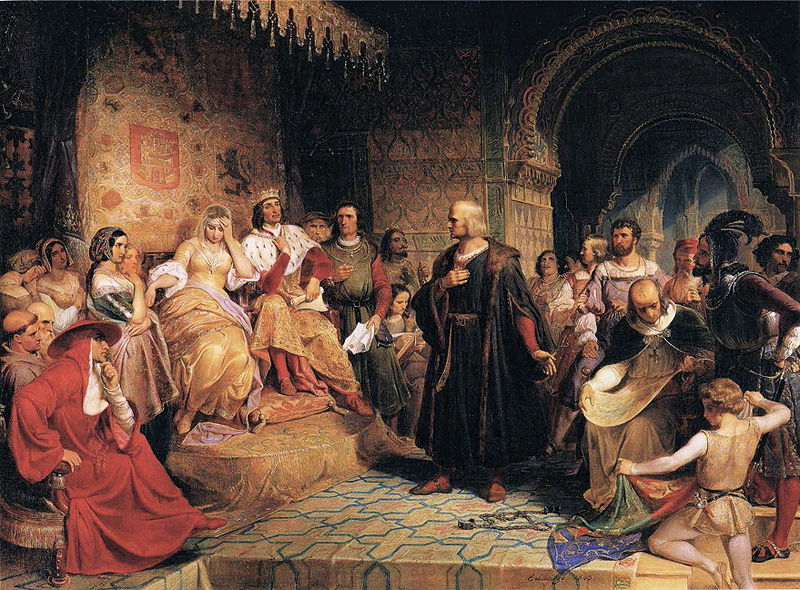 To put to rest these accusations and to ask for an investigation, Columbus worked his defense and claimed that those accounts of atrocity were all for the purpose of defaming him and taking over the colony by these men. He then asked for reconsideration, with the request that the court should study the case further.
To put to rest these accusations and to ask for an investigation, Columbus worked his defense and claimed that those accounts of atrocity were all for the purpose of defaming him and taking over the colony by these men. He then asked for reconsideration, with the request that the court should study the case further.
However, it was found out that he indeed used methods of torture to control the natives of Hispaniola. Due to that, he and his brothers remained in jail for six weeks until King Ferdinand had him released just in time for a fourth voyage. While he regained his freedom, he was not able to regain his position as governor. Instead, the Spanish Crown named Fray Nicolás de Ovando y Cáceres the governor of Hispaniola.
Fourth Voyage
Christopher Columbus left Cadiz with his brothers along four ships, namely the Gallega, the Capitana, the Santiago de Palos, and the Vizcaina on May 11, 1502. His aim now was to find the Malaccan strait, which would serve as his access to the Indian Ocean. But he took care of other businesses first when he went to Arzila in the coast of Morocco to rescue soldiers held captive by Muslim warriors.
He then took a quick rest at Martinica, but during the time he continued his journey, a storm began to form. He planned to find shelter in Hispaniola, but was denied by the governor. His crew instead went to the island of Rio Jaina to let the storm calm down.
After the storm (and after dealing with the ship’s minor damages), he sailed to Jamaica and returned to the South American mainland where he landed at Guanaja. He then explored the South American coasts of Honduras, Costa Rica, and Nicaragua, eventually reaching Panama on October 16, 1502.
He stayed for two months exploring the mainland, but in the middle of things, they encountered a storm, much greater than the one in Rio Jaina. Columbus mentioned in his diary that it rained for nine straight days, and most of his crew was in despair, tired and with nothing to see except the turmoil of the seas.
Once the storm was gone, he sailed back to Panama and established a garrison in Rio Belen in January 1504. On his way there, he sighted the present Cayman Islands, and due to the number of sea turtles, named it Las Tortugas. He also headed back to Cuba, where he encountered another storm that forced him to just settle at St. Ann’s Bay in Jamaica for over a year.
Columbus’ crew was stuck there, before Diego Mendez and a few natives went to Hispaniola to ask for help by the use of canoes. But still, the governor refused to offer assistance. Out of desperation, Columbus asked for the help of the natives by predicting the next lunar eclipse for them, in exchange for providing them supplies and repairing their boats. Thanks to the astronomical table named Ephemeris, he was able to impress the natives and they in turn believed in him and helped him return home. He then left on June 29, arriving in Sanlucar on November 7, which marked the end of his great American voyages.
His Later Years
Columbus settled in Valladolid, a small town in central Spain, and it was said that he became a very religious man in his later years.
It was also said that with Diego, he published books containing the fruits of his expeditions. The first was the Book of Privileges, an account of the benefits and rewards he was entitled to from his deal with the Spanish Crown. The second, the Book of the Prophecies, was more religious in nature, where he used several scriptures from the Bible to claim that his achievements were part of God’s plan in the history of salvation.
Later on, he demanded through a series of legal demands and claims that the crown should give him a tenth of all the profits from all the lands that he had explored. Of course, the Spanish Crown rejected his demands; however, the lengthy legal process named pleitos colombinos ended in arbitration, subsequently giving Columbus the title of “Admiral of Indies” and the possession of Jamaica and Hispaniola, together with a payment of 1000 ducats.
On May 20, 1506, Columbus died of a heart attack due to arthritis (as claimed by researchers in 2003), in Valladolid. He was then buried in the La Cartuja monastery in Seville. At that time, he was known as one of the richest voyagers in Spain due to the massive amounts of gold that he was able to acquire in Hispaniola.
But then, it was not Columbus’ riches that made him significant as an Italian explorer. Rather, it was his painstaking hard work during all his four voyages that gave him the knowledge and the right to rule over the New World, thereby opening the gates for the formation of another colonial empire. It is in this aspect where Christopher Columbus’ greatness lies.
